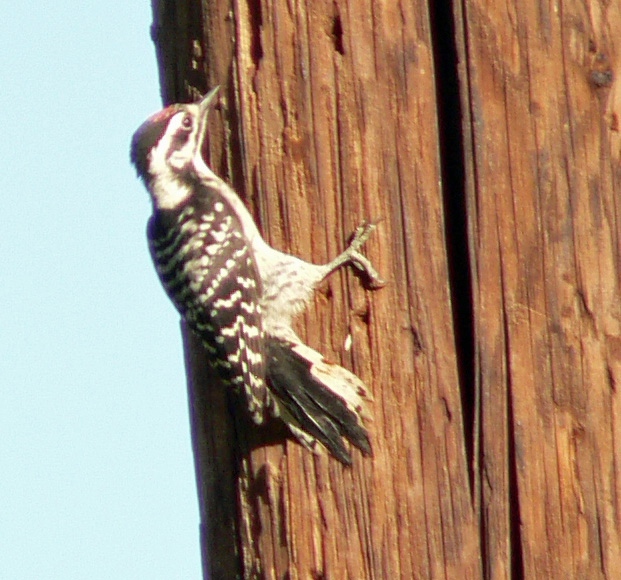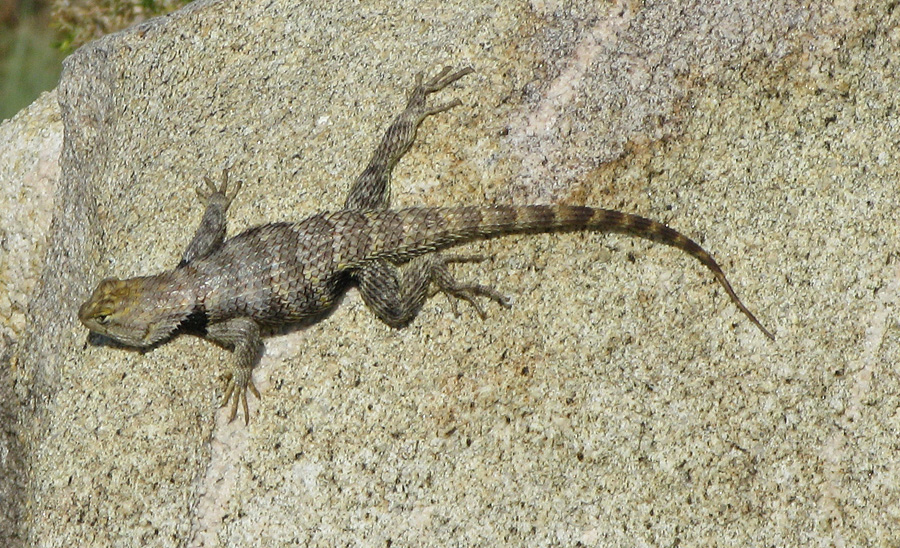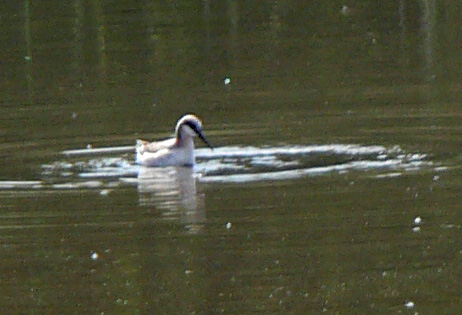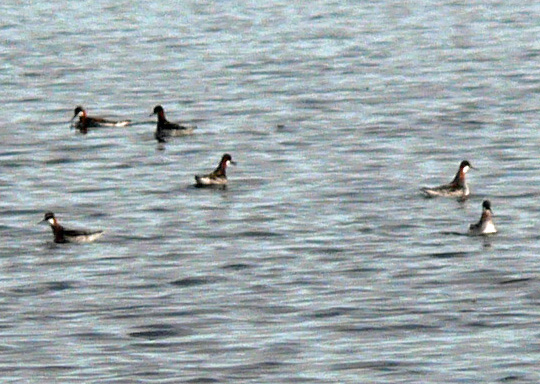Saturday, May 10, I got up bright and early to catch a boat out of Dana Point that the Sea & Sage Audubon Society had chartered for a four-hour cruise starting at 7:00 A.M. The goal was just to see what we could find in Orange County Waters. May is not the best time of year for pelagic birding, but the trip a few months ago had been canceled, and there’s usually something out there if you look. Plus it would be my first West Coast pelagic.
The route was out a a couple of miles to sea, north to roughly Newport Beach and then back a little closer to shore. This limited us to relatively near-shore species, but that still offered some good possibilities.
The parking lot produced Rock Pigeon, American Crow, and Black-crowned Night-heron (three perched on a small pier). Before we even left the harbor we had Double-crested Cormorant, Hermann’s Gull, Brown Pelican (in the hundreds), American Crow, and too many California, Western, and Ring-billed Gulls to count. I spotted a Spotted Sandpiper on the jetty. We were barely out of the harbor when we added Caspian Tern and Brandt’s Cormorant to the trip list.
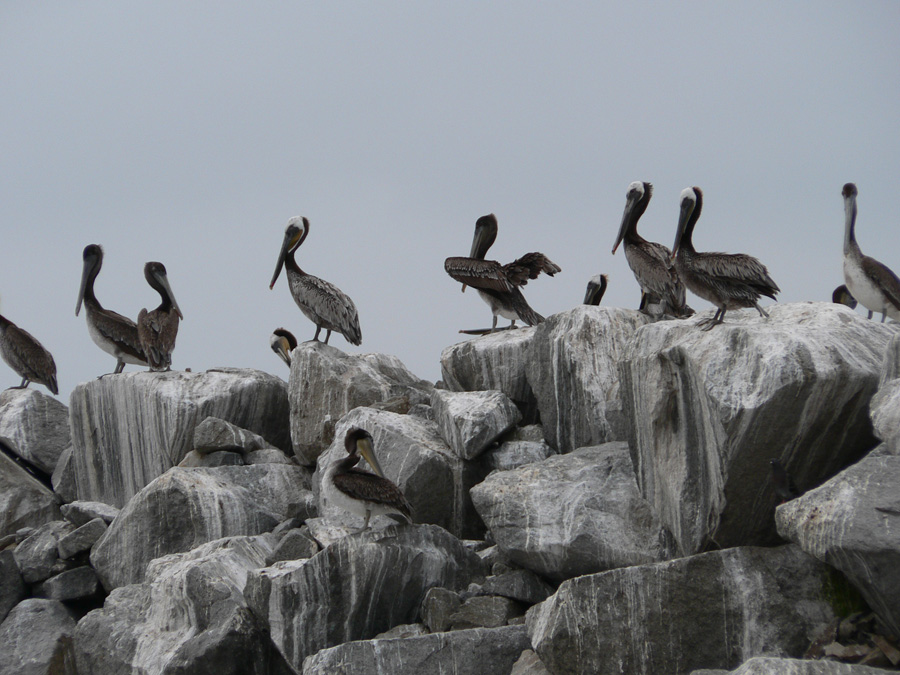
At first we mostly just saw more gulls and pelicans, but once we got a little ways offshore we picked up our first real pelagic bird: a Sooty Shearwater. Not a life bird for me. I’ve had them on East Coast pelagics, but at least one for my California list, and the first Shearwater I’ve seen in a couple of years.
At 7:42 we pick our first loon of the day: Red-throated, a relatively common species around here, and even commoner around New York.
At 8:05 we get our first phalaropes, 2 Red-necked Phalaropes in the water, off the starboard side. However the leader doesn’t see them, and the boat blows right past. (I tend to think most pelagics go way too fast.) Oh well, there are more out here.
8:30 A.M: I’m beginning to think the trip will be a bust when we spot a Rhinoceros Auklet! My first life bird of the day, #421. Some Least Terns also fly by.
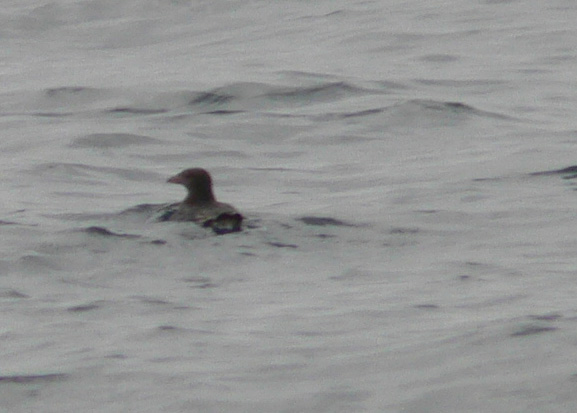
(Yes, I know the photos are even worse than usual. You try taking pictures of fast moving birds far away from a rocking boat with a point-and-shoot camera.)
(more…)
